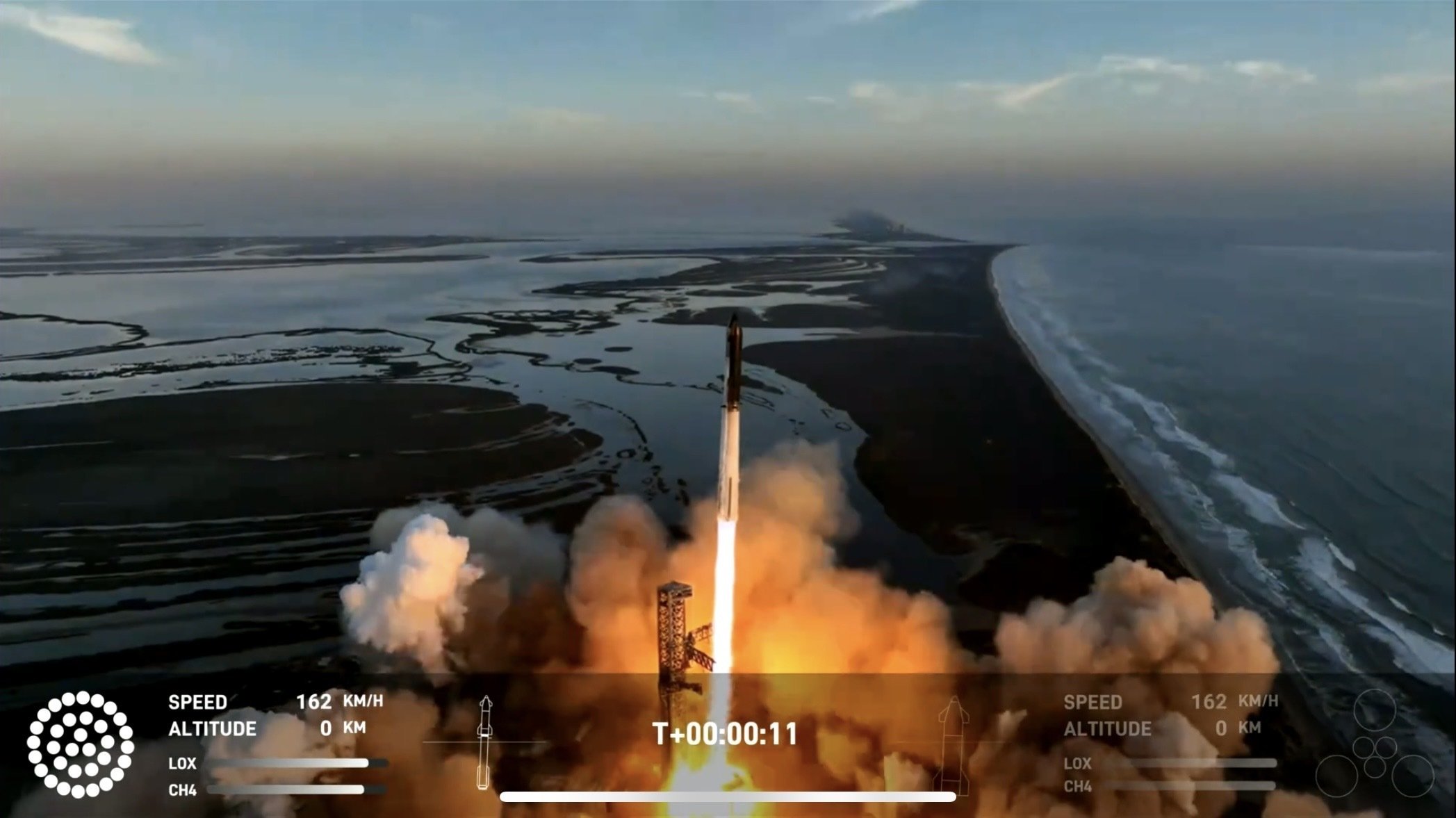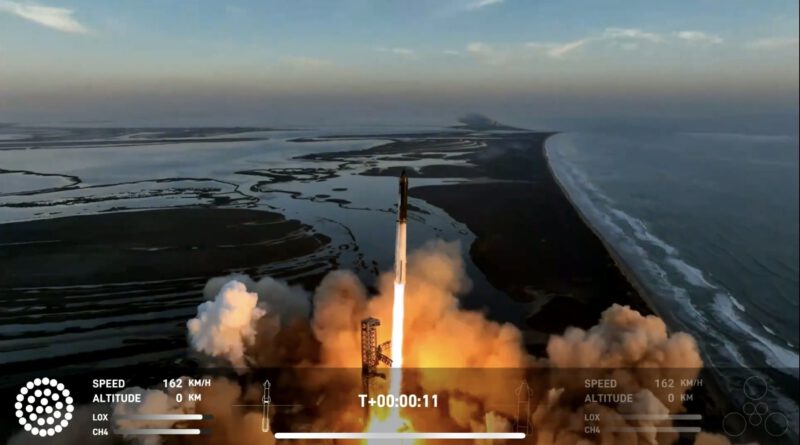Watch the moment Starship’s booster goes boom

SpaceX‘s gargantuan, methane-fueled Starship soared 90 miles above Earth on Saturday morning, though it exploded before it could complete its space journey.
Federal officials said no one had reported injuries or public property damage after the test.
Starship, a 400-foot-tall, super-heavy-lift rocket and spacecraft, took off shortly after 7 a.m. local time from SpaceX’s private spaceport in South Texas. For its second major flight test, the rocket survived longer and flew farther than it did in April, showing major engineering improvements over the past seven months.
In particular, Elon Musk‘s company was eager to demonstrate a new method of separating the booster from the spacecraft in the air, known as “hot-staging.” The first stage lit its engines right before dropping the second stage, which went as planned. Moments later, the booster broke apart in a spectacular blast.
The explosion wasn’t altogether unexpected.
“Today there is a good chance that our booster will also incur some damage from the second stage engines, but we need to test it out, see if the system can tolerate it, and collect data to learn how to do hot-staging better next time,” said Kate Tice, SpaceX’s quality systems engineering manager, before the launch during a live broadcast on X, the social platform acquired by Musk last year.
Here’s the moment the booster experienced a “rapid unscheduled disassembly,” aeronautics-speak for going boom. You can fast-forward to 42:14 in the broadcast for the fireworks:
SpaceX integrated the new hot-staging procedure to help prevent gravity from slowing down the spacecraft. The method also leverages physics to do most of the work pushing the two stages away from each other. Moreover, it could increase Starship’s lift capacity, one day allowing it to carry about 10 percent more cargo and people into orbit.
“More payload and more people to Mars,” Tice said, referencing Musk’s personal vision of using a fleet of Starships to populate Mars with 1 million people by 2050.
Despite the booster’s explosion, the spaceship continued to ascend to an altitude almost three times higher than the previous attempt.

The flight ended prematurely when something tripped the automated flight termination system on the ship as it flew over the Gulf of Mexico, said John Insprucker, SpaceX’s principal integration engineer. The system is a standard safety feature in rockets that detonates if problems occur during the flight.
If everything had gone as planned, the ship would have flown in space around Earth at an altitude of over 150 miles, then splashed down off the Hawaiian coast about 1.5 hours later. Instead, it blew up about eight minutes after liftoff.
“With a test like this, success comes from what we learn,” the company said in a statement. “Today’s test will help us improve Starship’s reliability as SpaceX seeks to make life multiplanetary.”
Want more science and tech news delivered straight to your inbox? Sign up for Mashable’s Light Speed newsletter today.
Following the test, the Federal Aviation Administration said it would investigate the anomaly that resulted in the spacecraft’s destruction. It will then identify a checklist of corrections SpaceX must complete before it can fly Starship again.
The launch was intended as a crucial demonstration of hardware NASA is depending on to get humans back on the moon in the next few years. The U.S. space agency has a $ 4 billion contract with SpaceX to use Starships to land astronauts on the moon during Artemis III and IV, two upcoming missions that could come as early as 2025 and 2028, respectively. NASA may end up changing the missions if slips in achieving key milestones continue, said Jim Free, NASA’s then-associate administrator of exploration systems, at a news conference in August.
But if there were undercurrents of concern about the pace of SpaceX’s progress, it wasn’t evident in comments from NASA leadership Saturday.
“Spaceflight is a bold adventure demanding a can-do spirit and daring innovation. Today’s test is an opportunity to learn — then fly again,” said NASA administrator Bill Nelson in a post on X, the site formerly known as Twitter. “Together @NASA and @SpaceX will return humanity to the Moon, Mars & beyond.”


